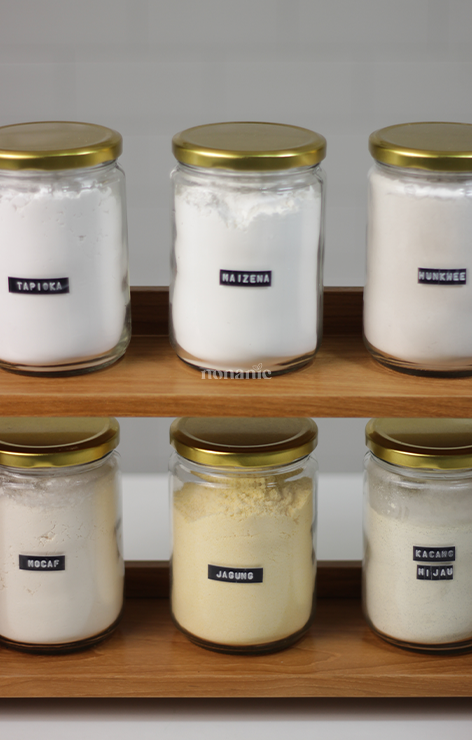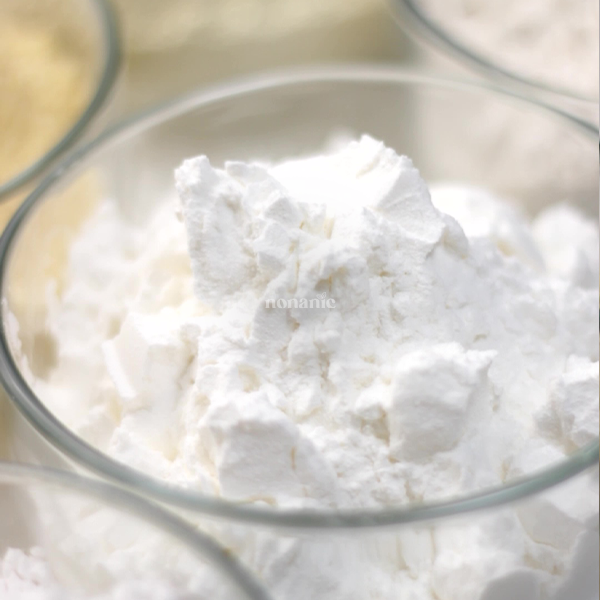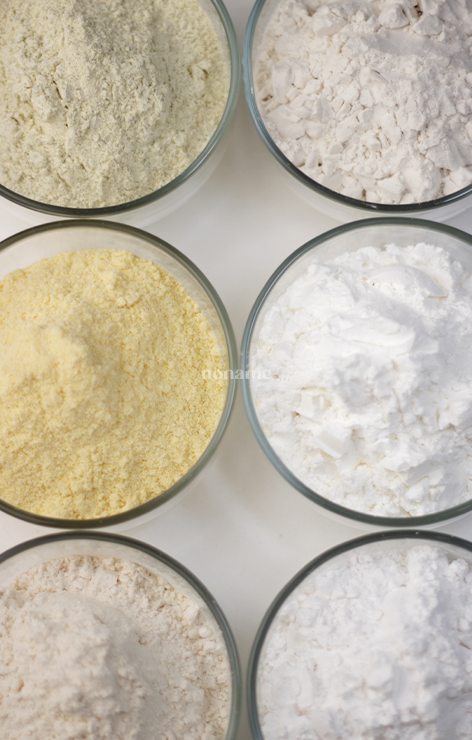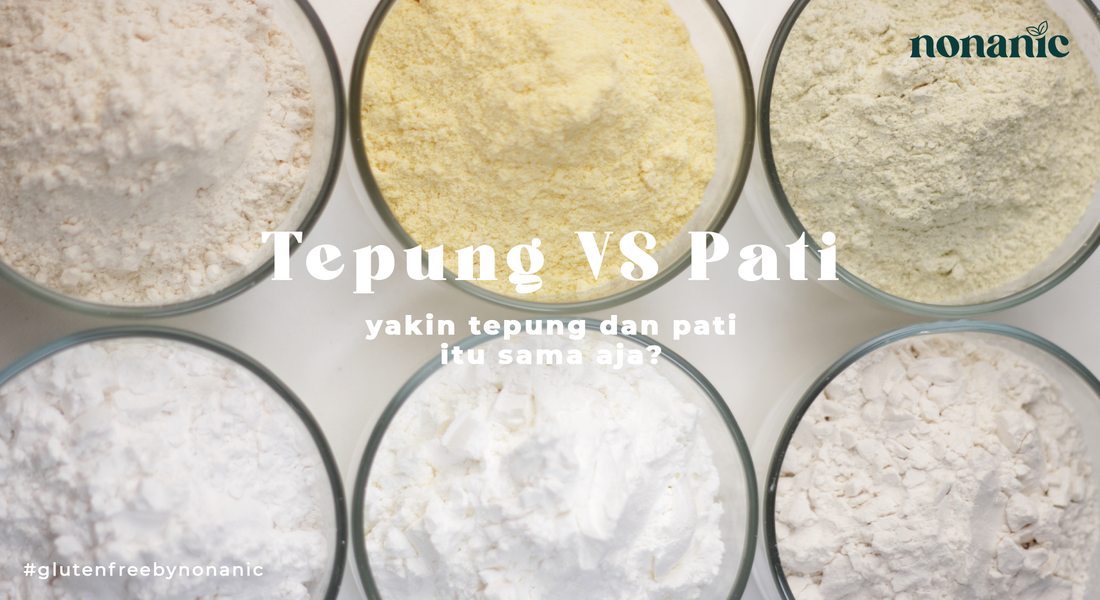
Tepung VS Pati

Wait.. wait! I'm putting on my boxing gloves! Because I need to find the person who says Flour and Starch are the same 😤
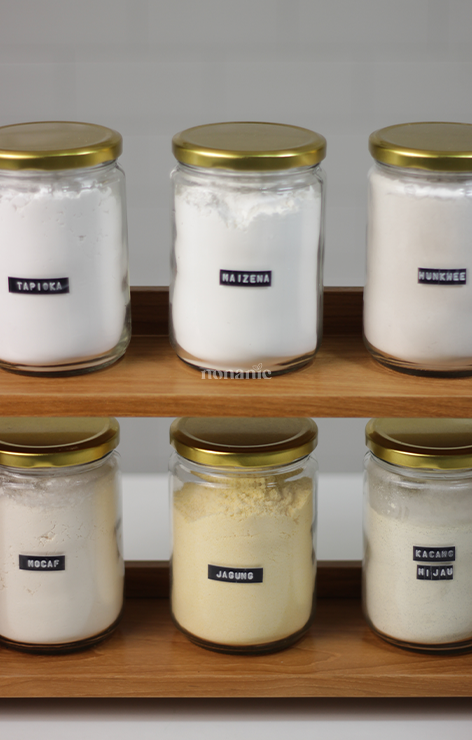
Ehehe just kidding, BestNiiicc. I don’t like picking fights, really. But seriously, this is fun to talk about, because Flour and Starch often get confused with each other. If Flour and Starch could vent, I bet they’d be gossiping about how people always mix them up. huehhe
Come closer! Let me explain this clearly so there's no more confusion.
So, why do so many people, when they see a fine white powdery ingredient, immediately call it flour? It could actually be starch! Yup, even though they look similar, they are totally different. Let’s break it down one by one so it’s crystal clear!
What’s the Difference Between Flour and Starch?
First of all, just by name they’re different. Flour is called “flour” in English, while starch is known as “starch.” They’re both used in cooking, but if we dig deeper into how they’re made, their texture, and their function, they’re really different.
- How They're Made
Flour is made from the flesh of plants that’s dried and finely ground. For example, cassava flour is made by processing cassava through grinding. Usually, flour has a slightly rougher texture because it still contains traces of the plant’s fibers.
Meanwhile, starch is made from the sediment of plants, BestNic. The plant is grated, squeezed, allowed to settle, and dried. This process results in a powder that's much finer and smoother than flour. For instance, tapioca starch is derived from cassava using this process. Starch is made to separate carbohydrates from the other parts of the plant, making it purer and finer.
- Texture and Color
In terms of texture, flour is usually coarser due to the grinding process that leaves larger particles. On the other hand, starch is much finer and smoother.
Color-wise, flour can vary depending on the plant source. For example, corn flour is yellow, and mung bean flour is greenish. But starch is usually pure white due to the separation process that makes it more refined.
- Function in Cooking
Now, here’s the important part. Flour and starch have different functions. Flour is often used to make cakes, bread, noodles, and other baked goods.
Starch, on the other hand, is more commonly used as a thickener or binder in cooking. For example, when making sauces or soups and you want to thicken them, you use starch like cornstarch or tapioca starch. Starch absorbs liquids and thickens them without altering the taste too much.
- One Plant Produces Both Flour and Starch with Different Names
One plant can produce both flour and starch, each with a different name, BestNic. For instance, cassava yields mocaf flour and tapioca starch. Mocaf flour is fermented cassava flour, while tapioca starch is extracted from cassava.
Corn also produces corn flour and cornstarch. Corn flour can be used in various dishes, while cornstarch is often used as a thickener. And don’t forget mung beans, which produce mung bean flour and hunkwe starch.
Gluten-Free Baking: Use Flour or Starch?
When we talk about gluten-free baking, the answer is: both. For instance, to replace gluten-containing wheat flour, you need a mix of rice flour and tapioca starch. This combination gives a similar result to wheat dough.
Rice flour provides texture, while tapioca starch acts as a binder. With this mix, you can make delicious gluten-free cakes, bread, or even pasta.
Why Is It Important to Know the Difference?
Knowing the difference between flour and starch is super important, especially if you’re on a gluten-free diet or following a specific recipe. Choosing the right ingredient affects the final result. For example, if you only use flour when you need starch, the texture might not turn out as expected. The same goes the other way around.
So, it’s clear now, right? Starting tomorrow, never call starch "flour" again! Otherwise, the starch might get angry. Hehe. Remember, flour and starch may look alike, but they’re two ingredients with very different characteristics and functions.
If you have any questions or want to know more about gluten-free baking or other ingredients, feel free to drop a comment below! Happy baking, Bestnic! 🍰🧁
#FlourVsStarch #GlutenFreeBaking #BakingTips #GlutenFreeByNonanic



